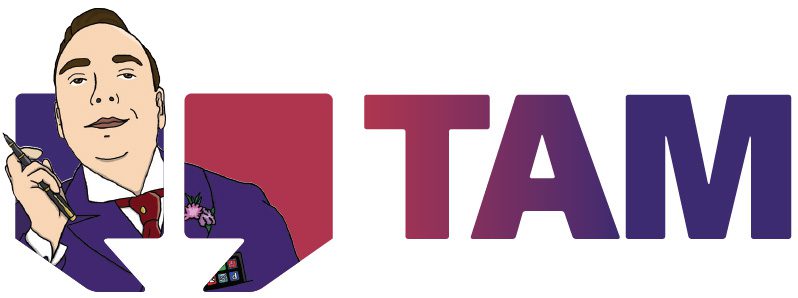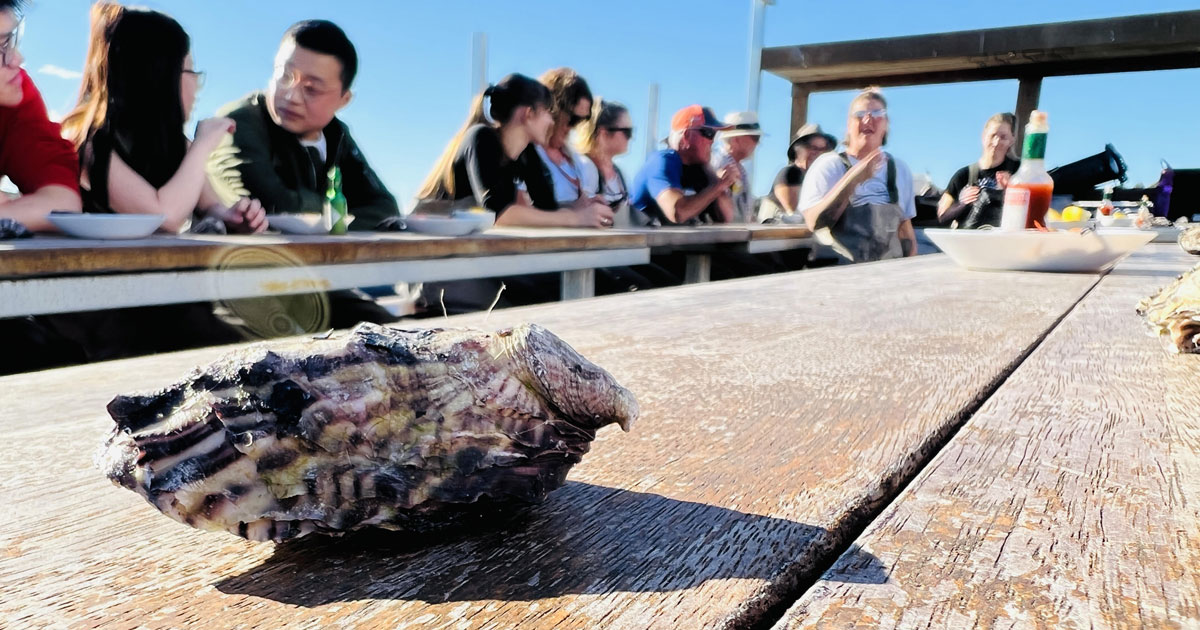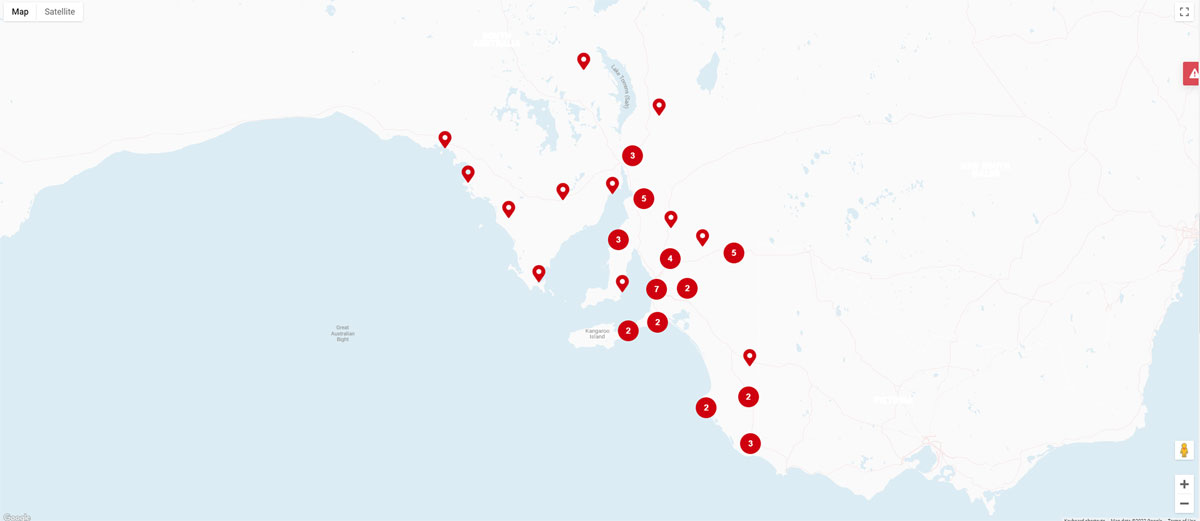Whether you're a tourist ready to explore South Australia or an operator working in the South Australian tourism sector, staff and volunteers in our Visitor Information Centres have pearls of wisdom to help you discover our great state's treasures.
These Centres are custodians of knowledge about what's on, where to go, who's running what, and where the best sights, sounds, and tastes are to be had.
In their role of matchmaker for visitors to all regions of South Australia, they become mapmakers; crafting bespoke itineraries and lists of suggestions for visitors just like pirates of old making treasure maps.
Having spent a week with VIC personnel at the SA Visitor Information Centres' state conference this week, I can attest to the fact that although I was able to do my fair share of talking as MC, these people left me in their wake when you got them started about ideas of what I could do if I visited their areas.
It was quite breathtaking.
I'm a South Australian who's lived here most of my life. I've been producing a South Australian podcast, The Adelaide Show, since 2013, in which I've striven to put South Australian passion on centre stage. But a few conversations into the event and I quickly learned how much I didn't know I didn't know.
This is why there is urgency in this article for you, if you're a tourism operator in South Australia.
Please make it a priority to build relationships with your local Visitor Information Centre(s) ASAP, ask about what information you could provide to best help them help visitors engage with you, and you'll find yourself rewarded by appearing on those hallowed treasure maps they make for tourists.
As an operator, or even as a South Aussie reading this ahead of a holiday at home, immediately stop assuming you KNOW your state and your region, and make a plan to connect with Visitor Information Centres so they can be your trusted advisors and fellow travellers.
Did you just command me to connect with a Visitor Information Centre? Yes, I did.
I know this article has started off strongly but as a fervent advocate for South Australia, I've been so shaken by how little I knew about gems scattered about my state, I'm on a mission to make sure we all exploit this invaluable resource.
What's been keeping me up at night since the conference, is the statistic that only around 5% of visitors to regions actually visit local Visitor Information Centres.
This is such a shame. It means to me that people are leaving regions of my state with experiences that, while fine, are potentially impoverished versions of the full experiences they might have had.
If I might get philosophical for a moment, this situation is reminiscent of the scenario from Plato's Republic, in which Socrates asks Glaucon to imagine a cave where people have been imprisoned from childhood:
These prisoners are chained so that their legs and necks are fixed, forcing them to gaze at the wall in front of them and not to look around at the cave, each other, or themselves. Behind the prisoners is a fire, and between the fire and the prisoners is a raised walkway with a low wall, behind which people walk carrying objects or puppets "of men and other living things". The people walk behind the wall so their bodies do not cast shadows for the prisoners to see, but the objects they carry do ("just as puppet showmen have screens in front of them at which they work their puppets". The prisoners cannot see any of what is happening behind them, they are only able to see the shadows cast upon the cave wall in front of them. The sounds of the people talking echo off the walls, and the prisoners believe these sounds come from the shadows.
In this famous passage, Socrates is suggesting that the shadows are reality for the prisoners because they have never seen anything else; they do not realise that what they see are shadows of objects in front of a fire, much less that these objects are inspired by real things outside the cave which they do not see.
And I fear that people not using Visitor Information Centres to aid their experience of South Australian tourism, are at risk of seeing mere shadows of what fully lurks around them, just out of sight.
Some advice for travellers to and within South Australia
If you're planning your holiday (or even on one at the moment), it's never too late to contact your closest Visitor Information Centre to pick the brains of the passionate people who have pearls of wisdom to share about local attractions and services that might best suit you.
And these pearls of wisdom might be quite literal if you're near one of our oyster producing areas like Coffin Bay near Port Lincoln (I've recently shucked at Oyster HQ), or more metaphorical when it comes to making connections between your appetite and the range of feasts on offer.
The rest of this article is for tourism operators, so if you're ready to dive into South Australia (quite literally if you're near Kilsby Sinkhole near Mount Gambier), here's a simple list and map of Visitor Information Centre locations on SouthAustralia.com.
A plea to South Australian tourism operators to embrace their Visitor Information Centres
One of the things that became clear to me during the conference, was the marketing "free kick" that awaits you if you can strike up strong, mutually-respectful relationships with your Visitor Information Centres.
And I don't mean "free kick" in any underhanded way through which Centre volunteers and staff might hoodwink visitors and manipulate them into supporting your business.
What I mean is, these typically-extroverted, regional patriots, actually take pride in helping visitors have the best experience of their "patch of turf" in South Australia. They yearn to create a win-win and I yearn for you to be part of that formula.
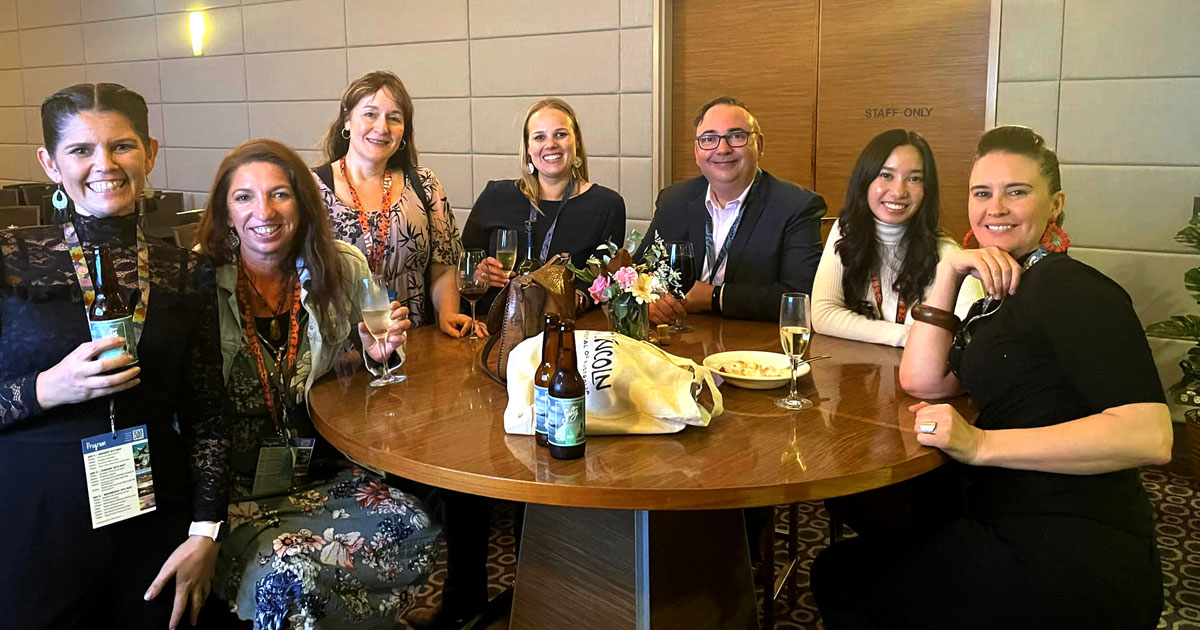
If you make contact with your Visitor Information Centre(s) in the coming weeks, you'll be seeing some fruits of the state conference where they have engaged in:
- getting even clearer about understanding the nature of their key visitors (thanks to workshops and a masterclass with Paige Rowett and Rebecca White of the Tourism eSchool)
- going deeper into understanding of visitor needs and trends (thanks to Rodney Harrex, Miranda Lang, and Jennifer Schmidt from the South Australian Tourism Commission - bonus: get up close and personal with Rodney Harrex from his Adelaide Show interview)
- reflecting further on their role as matchmakers (thanks to a presentation I made on behalf of Talked About Marketing)
- paying closer attention to visitor feedback and online tools (thanks to Shaun De Bruyn and Rebecca Uphill from TiCSA)
- developing a strategic vision to ensure they can maintain their efforts (thanks to Dr Kristine Peters from KPPM Strategy)
A recurring theme was the importance of getting your information up-to-date and polished in your free, ATDW listing (the Australian Tourism Data Warehouse).
While this means yet another task to cram into your busy day, it really has an amplification effect with the effort applied to ATDW making it easier for southaustralia.com, Visitor Information Centres, and other tourism industry sites to highlight your work.
Better experiences and memories for all, starts with creating conditions for infinite stories
My work as a journalist in my early career, and of being a blogging evangelist since 2005, compels me to suggest you take a step back before hurtling into your ATDW listing.
If you can identify some strong story themes related to the history of your operation or the area and/or story themes or challenges people might experience by engaging with you, and capture that in your listings on ATDW, on Google Business Listings, on your website, and in social media, I believe you'll uncover a fruitful and enduring source of "connection" on many levels:
- visitors will be better able to connect with your enterprise
- visitors might discover new ways of connecting with themselves, their family, and the region
- you might find new connections to your work
- your staff will be better placed to understand the "why" of what you're doing
And if Visitor Information Centres are brought in on the story, it will surely enable them to better connect visitors with you.
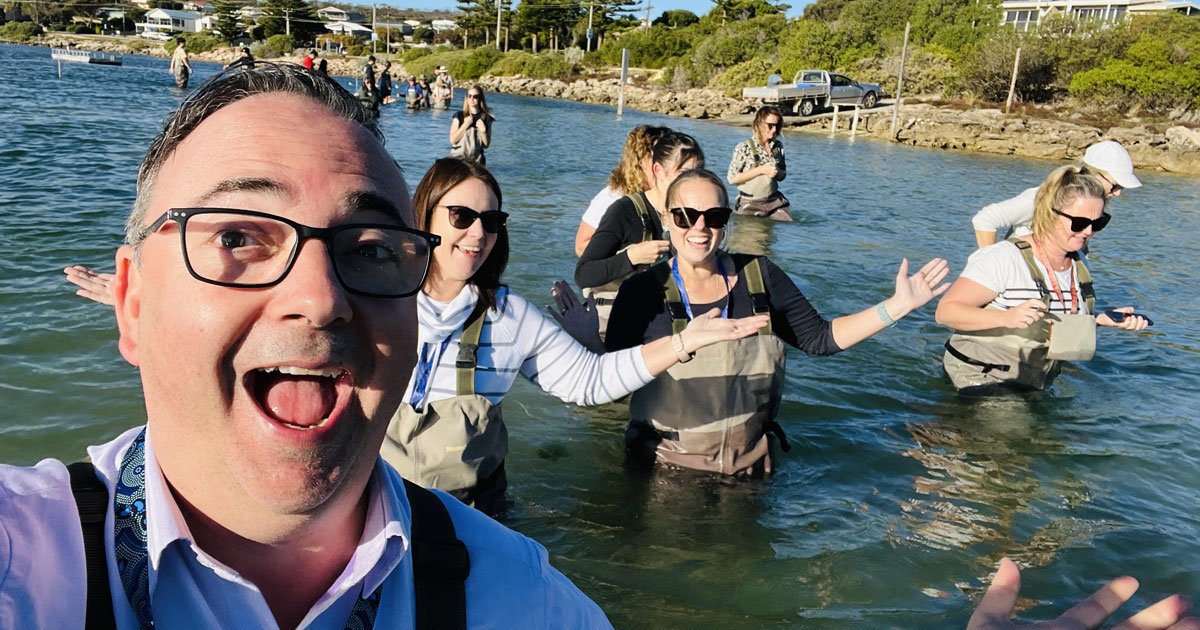
Some academic grounding to this call to storytelling
My colleague, David Olney, is working on a paper about storytelling in marketing and some choice observations will hopefully show you the importance of this mode of communication from the realm of academic rigour rather than just wishful thinking.
David quotes from Vu and Medina 2014, who define storytelling as, “the art in which a teller conveys a message, truths, information, knowledge, or wisdom to an audience - often subliminally - in an entertaining way, using whatever skill, or props he chooses, to enhance the audience's enjoyment, retention and understanding of the message conveyed.”
This suggests taking time to get clear about your enterprise's message, truth, information, or wisdom, that lies at the heart of your operations, can give you solid ground from which to launch your writing, filming, and storytelling efforts.
And, furthermore, if you do hone this ability to be driving by story, we know it will dramatically increase the likelihood of visitors spreading the word about you because, as Campbell 2015 observed:
People know a memorable story when they hear/see one, even if they struggle to define why it is memorable, because the central themes that people value have remained constant across time and location.
To round out these concepts distilled by David in his paper, there's an intriguing insight into the nature of our response to story as humans; it seems to be our natural language.
In his book, The Righteous Mind, psychologist Jonathan Haidt succinctly states that, “the human mind is a story processor, not a logic processor.” (Haidt 2012, p. 328)
Ironically, David also cites McKee and Fryer 2003, noting that, "stories are how we remember; we tend to forget lists and bullet points,” which I'm now sharing with you towards the end of an article containing many lists and bullet points.
In a recent visit to a regional museum, I was audience to a 15-minute spiel by a tour guide. Sadly, this prime opportunity to capture my imagination and help me understand why engaging with the exhibits would be lifechanging, was lost in a bland sea of lists and bullet points.
If only this little enterprise had taken time to capture key, human stories relating to its exhibits, leading with three of them in the 15-minutes would have undoubtedly held my attention and made me impatient to block out the rest of the afternoon to lose myself in these now life-filled relics.
As an aside, watch this space. I really want to craft a program to help such operators uncover the rich treasures of story they hold and make our regional museums goldmines of engagement in this attention deficit economy!
Where to from here?
As a tourist operator, I would encourage you to plan the following steps:
- Check out relevant listings on southaustralia.com to see what others are doing, what visitors see, and what information (if any) is showcased about you
- Join TiCSA for the networking and member benefits like free access to an important aggregator of online feedback
- Make time to reflect on the essence of your "story" - if you want a hand to get started, you can get 3 hours of our time for $44 through this mentoring program (closing soon)
- Plan some storytelling content of your own, through blog articles, website content, Google Business Listings, ATDW listings, and anywhere else you can think of
- Connect or reconnect with your local Visitor Information Centre(s) to explore what you can provide to them to make their job easier in recommending or selling your product/services/experience
- Keep doing the great work for the visitors you are servicing
On that last note, publican, Stephen J. Hunt, has built a successful hospitality venture on the eastern seaboard of Australia by having a core ethos of "making people's days". He explains that more in this podcast interview, but that primary focus on having a daily mission of making sure every customer who visits will have a great day, puts many other operational factors into perspective.
In closing, my marketing brain has been greatly impressed by the strategic work that the South Australian Tourism Commission is doing behind-the-scenes and I can tell you that our Visitor Information Centres were warmly invited to make further use of its surveys and planning to help them become better matchmakers.
Our state's tourism sector is in good hands and if you chip in, you know the saying, many hands make light work. In this case, that might refer to Col William Light, of course.
Here's to going deeper into storytelling, which is something our First Nations people could have told us about, right from the start. There are plenty of connections to be made in this field, plenty of culture to explore and, as this video shows, plenty of pearls to hunt through the bounty of the sea in SA (thanks to Mark Thomas from Missing Link Media for this candid capture of my first oyster tasting experience, and to the tireless team at Visit Port Lincoln for making this conference possible).
Let the stories continue to happen, be remembered, and be retold.
A closing note to thank Naomi Blacker for sticking her neck out and entrusting MC duties to me for her conference. Port Lincoln is a second home to us, through familial connections, and I have relished this week's opportunities to get to meet more of the people at the helm of this great city and region. Thank you.
